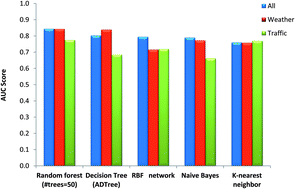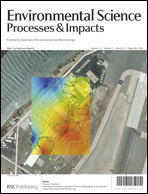Predicting submicron air pollution indicators: a machine learning approach†
Abstract
The regulation of air pollutant levels is rapidly becoming one of the most important tasks for the governments of developing countries, especially China. Submicron particles, such as ultrafine particles (UFP, aerodynamic diameter ≤ 100 nm) and particulate matter ≤ 1.0 micrometers (PM1.0), are an unregulated emerging health threat to humans, but the relationships between the concentration of these particles and meteorological and traffic factors are poorly understood. To shed some light on these connections, we employed a range of machine learning techniques to predict UFP and PM1.0 levels based on a dataset consisting of observations of weather and traffic variables recorded at a busy roadside in Hangzhou, China. Based upon the thorough examination of over twenty five classifiers used for this task, we find that it is possible to predict PM1.0 and UFP levels reasonably accurately and that tree-based classification models (Alternating Decision Tree and Random Forests) perform the best for both these particles. In addition, weather variables show a stronger relationship with PM1.0 and UFP levels, and thus cannot be ignored for predicting submicron particle levels. Overall, this study has demonstrated the potential application value of systematically collecting and analysing datasets using machine learning techniques for the prediction of submicron sized ambient air pollutants.


 Please wait while we load your content...
Please wait while we load your content...